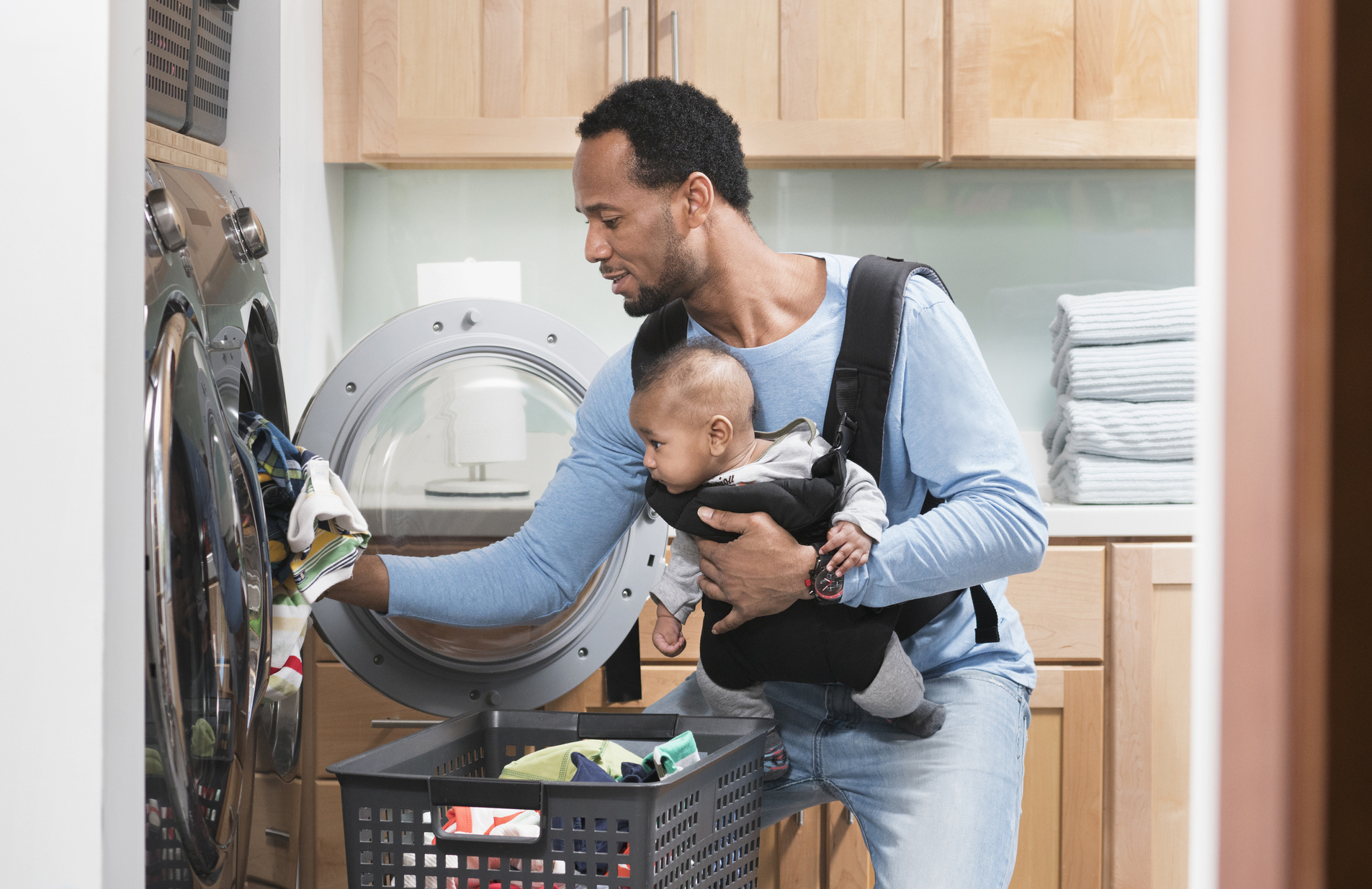Baby carrier safety: Everything you need to know to wear your baby safely


Baby carrier safety is the most important aspect of choosing the best baby carriers for your infant. For safety, the brand or model of sling you use actually matters far less than how well it is fitted and adjusted around you and your baby.
We've worked with Emily Williamson, professional Carrying Consultant and award-winning entrepreneur of baby carrier brand Izmi, as well as consulted information provided the National Childbirth Trust, to bring you all the essential information you need to know on baby carrier safety.
Whatever sling, wrap or carrier you choose to use with your little one, here’s what you need to know and to check to keep your baby safe and secure.
What makes a sling or baby carrier safe?
Emily Williamson provides the following baby carrier safety tips along with a 'T.I.C.K.S' checklist for parents to remember when baby wearing:
- A safe sling or carrier is one which secures a baby so that they cannot fall. It should support their body to ensure that their airways are protected.
- A good quality wrap or carrier will be made from materials and techniques that have been tested to hold the weight of a baby. Used correctly, your baby will not fall.
- To support your baby’s body safely, preventing any flopping or slumping which could compromise a baby’s airways, a carrier needs to fit snugly around both you and your baby.
- Your baby’s spine and head should be fully stabilised against the movements of your body. Their face and nose should always be uncovered.
The industry standard T.I.C.K.S. guidelines give you a clear checklist to follow to ensure that your baby is held safely in any sling, wrap or carrier:

What are the risks of using slings?
Risks of using baby carriers or slings are mainly associated with dropping or positional asphyxiation (when a baby's position in a sling or carrier leaves them unable to breathe).
As a result of these risks, there are tight safety standards for slings and carriers in the UK.
Parenting advice, hot topics, best buys and family finance tips delivered straight to your inbox.
There are two main things anyone wearing a baby must ensure at all times to make sure a child in a baby carrier is safe:
- Ensure there is no risk of your baby falling
- Ensure your baby’s head is supported and airways are clear
Read on for more information about these essential aspects of baby carrier safety…
Baby carrier safety: the need to know essentials
First and foremost, ensure there is no risk of your baby falling
- Make sure that the carrier and carrying position you are using is appropriate for your child’s age or stage.
- Ensure that all buckles are fully clicked closed and fastened in the correct places.
- In a wrap, ensure that the fabric is fully supporting your babies back and bum.
- Your wrap or carrier is adjusted to tightly hold your baby high and snug against your chest.
- Follow manufacturer’s instructions or seek advice from a professional carrying consultant.
Support your baby’s head and airways
- Check your baby’s head is supported in line with their spine, and will stay stable as you move around.
- You can use your carrier head-rest, or wrap fabric to stabilise your baby’s head and neck. You could also support behind their neck using a rolled up muslin square, or other padding if your baby needs additional support.
- Never cover your baby’s face, nose or mouth with fabric. Make sure you can always see that your baby’s face and nose are clear from obstruction.
- Make sure your baby is held high and snug on your body. Their head should be close enough for you to kiss the top of it.
- Fasten or tie your carrier tightly to support your baby close against your body and prevent them from dropping or slumping.
When can I carry my baby in a carrier? Are they safe for newborns?
In theory, babies can be carried in a baby carrier when they are newborns. So you can start carrying your baby as soon as you feel comfortable and ready to do so.
However, some experts believe you should not carry your infant in a baby carrier until their neck muscles are strong enough to support their head. This is at about 4 or 5 months old.
Professional Carrying Consultant Emily Williamson advocates that "yes baby carriers are safe for newborns".
But, she also reiterates that if you are carrying a newborn you must make sure that whatever make or model of baby carrier you are using, it fully supports your baby’s head and airways.
She also adds: "Babies born prematurely and/or with a low birth weight are at greater risk of suffocation. Take extra care, and seek advice from a health and/or carrying professional before using your carrier."
https://www.youtube.com/watch?v=qXviHhS22h0
Can I breastfeed safely in a sling?
Yes, you can breastfeed your baby in a sling. Emily advises: "When breastfeeding make sure that the baby’s spine is supported and no fabric covers their head. Always monitor your baby while feeding. Return them to a higher, tighter position with their head above your breasts as soon as they finish."
When it comes to breastfeeding a baby in a sling, the NCT advises: "Be aware of the risks. Make sure you check the manufacturer’s instructions as some suggest you don’t breastfeed in their slings."
They also advise mothers to keep in mind the following tips:
- Make sure you check your baby can breathe easily and that there are no trip hazards for you.
- Support your baby at all times.
- Change your baby’s position after feeding. Their head should be facing up and clear of the sling and your body.
- You can do this vertically or in a more laidback position. While you will have to use your hands, it can give you more freedom to move. It also frees up one hand to help you get your latch sorted.
Baby carrier safety and developmental dysplasia of the hip
There is still further research that needs to be carried out to confirm if certain baby carriers and the way we carry babies influences their hip development.
The NCT says: "We don’t yet know whether any particular positions or carriers are good or bad for your baby’s hips."
The spread squat (also known as the jockey position or M-position) is the recommended position for your infant to be in whilst you wear your baby.
The NCT explains: "The spread squat is where the baby has their thighs spread around the wearer’s torso. The baby also has their hips bent so their knees are slightly higher than their buttocks, or at buttock level with the thighs supported."
The International Hip Dysplasia Institute (IHDI) also recommends the 'M-position' for baby carrying. They describe the position as: "Thighs spread around the mother’s torso and the hips bent so the knees are slightly higher than the buttocks with the thighs supported."
In general the IHDI advises:
" Any device that restrains a baby’s legs in an unhealthy position should be considered a potential risk for abnormal hip development. It is also important to assess the size of the baby and match the device and carrier to the size of the child so that the hips can be in a healthy position during transport.
"Parents are advised to research the general safety and risks of any device they wish to use. When in doubt, we recommend involving your primary health-care provider in any further decision-making that may be medically relevant."

An internationally published digital journalist and editor, Rachael has worked for both news and lifestyle websites in the UK and abroad. Rachael's published work covers a broad spectrum of topics and she has written about everything from the future of sustainable travel, to the impact of the coronavirus pandemic on the world we live in, to the psychology of colour.